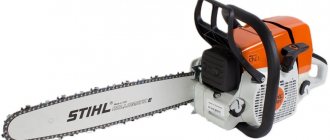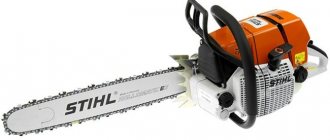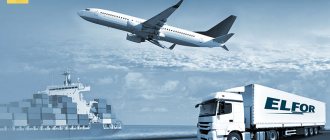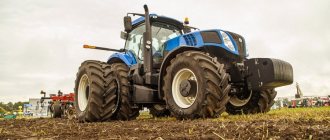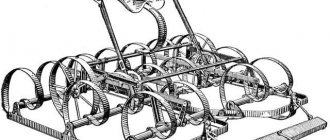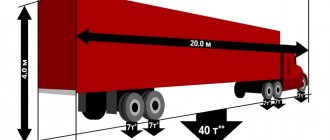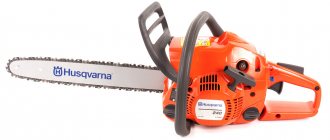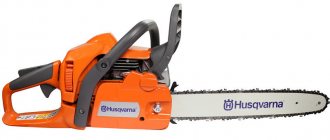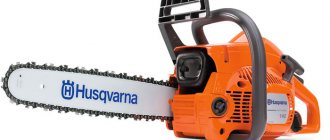What can you see on Russian roads? Among the motley variety of road users, some specimens are of particular interest; for example, you can find massive trains carrying multi-ton cargo of various origins, called road trains.
These unusual representatives of vehicles have their own characteristics, and driving them is much more difficult than an ordinary truck or car with a trailer; such vehicles do not have good maneuverability and require special driving skills, so the driver needs to have the appropriate category of license to get behind the wheel of a tractor.
For this type of vehicle with a multi-ton mass and large dimensions, taking into account the danger posed by the “colossus” to other road users, as well as the heavy load on the road surface, the traffic rules impose special requirements.
Classification of road trains
Road trains are divided into:
- universal. They come with flatbeds and universal vans. Designed for complete cargo transportation of any goods;
- specialized. They are used to transport special cargo, and their links are: dump trucks, tanks, refrigerators;
- special. They are used only for transporting equipment mounted on them: mobile power stations, compressor units.
All road trains differ from each other in types of construction, load capacity, and the nature of the distribution of traction forces. Depending on the nature of the distribution of traction forces, a road train can be:
- passive (without driving wheels);
- active. Equipped with their own drive wheels.
According to the type of connection, trailer links of road trains are:
- trailers. Refers to a non-self-propelled vehicle that is connected to a tractor by a towing device;
- semi-trailers. Also a non-self-propelled vehicle connected to the tractor by a fifth wheel. All trailed road trains consist of a tractor and several or one trailer.
Why Scandinavian solutions are closest to Russia
Multi-unit road trains transport cargo on all continents. The most famous countries for using road trains are Australia, USA, Canada, Sweden, Finland and the Netherlands. Sweden and Finland are as close as possible to Russia in terms of the types of rolling stock that are already in operation, certification, climate, land borders with the EU and best practices in the use of MAP.
Sweden and Finland are as close as possible to Russia in terms of experience in using multi-unit road trains
The introduction of the multi-unit concept in Sweden and Finland in the mid-1990s was primarily due to compliance with the Kyoto Protocol to reduce greenhouse gas emissions. Road transport is one of the main air polluters, so Swedish research into the advantages and disadvantages of truck combinations primarily focuses on environmental aspects, leaving the load on roads and bridges and even some technical nuances of rolling stock in the background.
The research of the German Federal Highway Research Institute (BASt) on the possibility of using multi-unit road trains in Germany - more than two hundred pages long - and the additions to it after the test period are more extensive. They cover issues of road infrastructure, road safety, economics and logistics.
Technical characteristics of road trains
When considering the technical parameters of road trains that are used in international cargo transportation, it is worth starting with their length and carrying capacity. The maximum permissible length of a road train, according to the existing legislation of the Russian Federation, is 20 meters. In EU countries, it is allowed to use road trains up to 16.5 m long. As for height restrictions, the dimensions of road trains should not exceed 4 m in height from the road surface.
Types of trailer links of road trains
In total, there are 4 types of trailers for road trains that are used for complete cargo transportation:
- trailed options. Consists of a tractor and a number of semi-trailers;
- saddle Also consist of a tractor and semi-trailers;
- dissolute. They are represented by a tractor and a trailer;
- fifth-wheel trailers. Consists of a tractor and a number of semi-trailers.
Fines for violation
For neglecting the rules of current legislation, administrative liability is provided in accordance with Article 12.21.1 of the Code of Administrative Offenses of the Russian Federation, while individual entrepreneurs are subject to the same liability as legal entities. Violators, which include the driver, the person responsible for transportation, a legal entity and the owner of the vehicle, are fined for exceeding the permitted weight and dimensions; in addition, if the vehicle is overloaded by more than 50%, the driver is deprived of his license for 6 months. The transport itself, along with the cargo, is sent to the impound area. In addition to overloading, penalties are provided for providing false information about weight in documents, exceeding vehicle size standards by 10 cm, lack of permits for moving large objects, and deviating from the route.
Requirements for the operation of road trains
For complete international cargo transportation, the following requirements are imposed on road trains:
- coupling and uncoupling is carried out on flat surfaces. The road surface must be hard;
- the axle of trailers and the tractor must be located on the same straight line;
- In difficult weather conditions, the driver must brake smoothly and at low speed. Otherwise, the composition may simply fold;
- goods are placed evenly in trailers. Avoid overloading and shifting the center of gravity;
- while driving, the driver must monitor the tire pressure;
- It is prohibited to transport people in trailers;
- during a voyage it is important to monitor the axle load;
- While driving, it is necessary to regularly check the pressure in the brake system.
Maximum permissible weight for cargo transport
The legislation also establishes weight limits (meaning the total weight of the vehicle along with its cargo), vehicle axle loads, permitted overloads and rules for moving when the standard values are exceeded.
The maximum weight for each car is set by its manufacturer, and this parameter can be found in the passport (PTS). In addition, Annex 1 to Government Decree No. 272 indicates permissible masses taking into account the number of axles. Thus, for fifth-wheel and trailed road trains the following restrictions apply:
- Three-axle - 28 tons.
- Four-axle - 36 tons.
- With 5 axles – 40 t.
- With 6 or more axles – 44 t.
Another important parameter is the axle load. As a rule, the rear axle bears the greatest load due to the design features of trucks, where transportation objects are supposed to be placed at the rear. Permitted axle loads are given in Appendix 2 to Government Decree No. 272. The maximum permissible values of this parameter are also the basis for restricting the passage of certain types of vehicles on roads and are indicated by special road signs in some areas.
According to Federal law, overload should not be more than 2% of the permissible value. For vehicles whose gross weight exceeds 44 tons, you need to obtain a permit where the route and other data will be presented, and when the loaded vehicle weighs 80 tons, the route must be drawn up by State Traffic Inspectorate employees.
What is the difference between trailers and semi-trailers
For complete cargo transportation from EU countries to Belarus, trailers and semi-trailers as part of road trains are often used. What is the difference between them, and which option is preferable?
The main difference between a trailer and a semi-trailer is their design. Namely, to the method of attaching the trailer to the tractor. A trailer is a vehicle (vehicle) designed to transport different types of cargo. It is equipped with a drawbar and a drawbar with a loop, made of durable metal. The tractor has a special coupling device (hook or towbar), with the help of which the trailer and the tractor are coupled into one unit. Trucks and trailers on two or three axles are mainly used as tractors for complete international cargo transportation.
Semi-trailers are attached to the tractor by the fifth wheel coupling using a coupling pin. This allows the semi-trailer to take on a certain part of the load. That is, such a vehicle is much easier to drive. It is characterized by high maneuverability and stability on the road. Road trains with semi-trailers can reach any speed on specially designated highways.
Advantages of semi-trailers
The main advantages of semi-trailers, which are often used for full freight transportation, include:
- safety and comfort while moving;
- economical fuel consumption;
- high maneuverability;
- the ability to develop high speed on a specially equipped track;
- wide range of applications;
- a wide range of semi-trailers for different tractors;
- ease of repair and maintenance.
Leading manufacturers
Nowadays, road trains are produced by dozens of factories around the world. In company catalogs you can find the model of the required assembly or order a truck individually. Manufacturers' websites contain photo and video reviews, answers to customer questions and customer reviews.
Despite the variety of offers, truckers in the Russian Federation and the CIS prefer several manufacturers. Let's look at them.
Russian
Among domestic equipment, the Ural road train model 44201-862 stands out. It is rare to find it on sale for free. The khaki-colored truck is used in the Russian Armed Forces. Photos and drawings of car gateways and fuses are actively discussed on foreign forums. And there is something to see!
The Ural was designed by the best engineers on a special order; the road train was used in the training of special forces of the army. At the moment, the truck is morally obsolete, but it has taken a worthy place in the history of Russian mechanical engineering.
Another striking model used by the army is ZIL 6009 and 60091. The truck has a gasoline engine with 150 horsepower. The reinforced design allowed the road train to overcome the most remote off-road conditions.
The auto pride of the last century was replaced by cars from the SZAP, KRAZ, KAMAZ factories.
Today, a place of honor among transport companies is occupied by the KAMAZ road train, assembly 6460-91017+9509. The truck is adapted to all types of roads and has powerful stabilizers. This means that there is no lateral movement of the platform.
The characteristics of another car, the brainchild of . Models 7500 and 7502 are designed to operate in a train with a gross weight of as much as 198.5 tons!
Another giant, KAMAZ 65207-87, has a total weight of 44 tons. The road train is universal, the platform is onboard. The truck's tires are pneumatic and tubeless, which allows it to travel on any type of road.
Foreign
Among the “foreign” equipment, the most popular are road trains, Volvo, DAF, Iveco, Yumba, and Man.
“Europeans” are distinguished by the following characteristics:
- increased degree of comfort;
- spacious cabins, improved chassis;
- wide sleeping areas;
- full automation.
The cost of imported road trains is higher, but transport companies are not afraid of this fact.
The Dutch model 105.410 with a trailer of 120 cubic meters is popular among cargo carriers. The diesel truck complies with Euro-5 standards, the engine “pulls” 410 horsepower. The cabin is equipped with a cruise control system, power steering, and two spacious berths. In addition, the driver's seat is equipped with a pneumatic seat. Everything is for convenience!
Another favorite is the relatively small IVECO Stralis road train. Body volume is 56 cubic meters. The tilt platform allows you to transport a wide variety of goods.
What to look for when choosing a trailer and semi-trailer for complete cargo transportation
When choosing a trailer or semi-trailer for a tractor, attention is paid to:
- type of cargo transported;
- characteristics of the cargo transportation route;
- number of flights.
If we are talking about international cargo transportation of food products, pharmaceutical products or fresh flowers, then the choice should be made on refrigerated or isothermal trailers. With their help, it is easy to control the temperature inside the van. But loose building materials, such as sand, crushed stone and gravel, are transported on semi-trailers - dump trucks. If complete cargo transportation of household goods packed in boxes is carried out, preference is given to curtain side semi-trailers.
European Modular System (EMS)
Almost simultaneously with the European Directive 96/53, the European Modular System (EMS) project appeared in Sweden in 1996. In 1997, Volvo created the EMS concept. It is based on the use of modules from classic European road trains to create multi-unit combinations with a length of 25.25 m. The versatility and ability to effectively use rolling stock both in pan-European dimensions and in EMS is the main advantage of the concept. The new road trains are nicknamed EuroCombi, EcoCombi or Gigaliner.
Don't slow down too much
Experienced drivers know that stopping a road train is much more difficult than a regular truck. Therefore, you should not exceed the maximum allowable speed of 90 km/h on highways and 70 km/h on public roads. When braking sharply, someone’s life can be ruined as a result of the “folding” of the road train, when the trailer moves faster than the tractor and can be carried into the oncoming lane. In this case, it is likely that the towing device will have to be repaired, and the semi-trailer risks ending up on its side, pulling the tractor along with it.
“When driving on a slippery road surface, using the engine brake is strictly prohibited. When the engine brake is applied, the fuel supply to the engine is automatically shut off and the damper in the pipe leading from the exhaust manifold to the exhaust pipe is closed, which contributes to a sharp decrease in engine speed and slows down the road train, which on a slippery road can lead to the trailer skidding. Braking by reducing gears increases engine speed and allows you to achieve a smooth deceleration,” recalls Oleg Grebenko.
When driving on a section of road with broken surfaces, it is not recommended to use braking. Just like the roll-up.
“Rolling up is the movement of a car due to inertia with the gear engaged in the gearbox, but without fuel supply. Breaking the connection between the engine and the wheel on a truck is strictly unacceptable! This can lead to both vehicle breakdown and an emergency situation. Rolling in neutral is not recommended at all. In addition, this type of coasting does not save fuel at all in real operation, since it forces a “ragged” driving mode. Mainly, to use coasting as an effective driving technique, the driver must have the skills and knowledge that allow him to avoid dangerous situations and eliminate the risk of damage to vehicle components and assemblies,” warns a Scania truck training specialist.
“When coasting, when there is no connection between the wheels and the engine, the level of vehicle control is lower, and, accordingly, safety is lower. On a slippery road, coasting is unacceptable,” adds a representative of the AsstrA Associated Traffic AG holding.
National transport system
The development of the design of trucks, the increase in weight and dimensional parameters, combined with the classic advantages of road transport - door-to-door delivery and the specialization of rolling stock for the characteristics of the cargo - have led to a significant shift in freight traffic from rail and river transport to road transport.
In Fig. Figure 10 shows a diagram of the history of changes in freight traffic between modes of transport in Germany, a small country in size relative to Russia.
Rice. 10
Every noticeable swing towards motor transport is associated with the abolition or reduction of administrative barriers and a change in the geopolitical situation (German reunification, EU enlargement, etc.). While defending the share of the freight transport market, the German Railway Alliance (Allianz pro Schiene), which unites railway associations, environmental and passenger associations under one wing, actively opposes the introduction of gigaliner road trains.
It seems that in Sweden and Finland few people are interested in the problems of freight transportation by rail.
The history of the development of the world transport system speaks of the most optimal use of multi-unit road trains in places with low population density, poor development of other modes of transport and on extremely long transportation distances.


